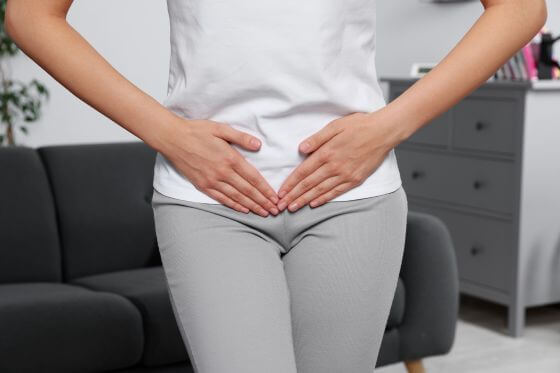If you’re dealing with incontinence, there’s more hope than ever before. The year 2025 has brought some exciting advancements in the world of physical therapy—and here at Houghton Physical Therapy, we are proud to offer cutting-edge approaches that help our clients manage incontinence and reduce frequent urges.
Pelvic floor therapy is no longer limited to basic exercises. Thanks to technology, we now have tools and techniques that are changing the way we treat pelvic floor issues. Whether you’re experiencing urinary incontinence, pelvic pain, or simply want to feel stronger and more supported from the inside out, this blog will walk you through the latest innovations that can help.
Understanding Pelvic Floor Dysfunction
The pelvic floor is a group of muscles that forms the base of your core. These muscles support your bladder, uterus (in women), and rectum. When these muscles become weak, tight, or uncoordinated, it can result in:
- Urinary incontinence (leakage when coughing, sneezing, or exercising)
- Pelvic organ prolapse
- Lower back pain
For many people, pelvic floor dysfunction is frustrating and isolating. But it doesn’t have to be. The latest advancements in pelvic floor therapy are giving people renewed confidence and control.
Common Causes of Pelvic Floor Dysfunction
Before we dive into what’s new in 2025, it helps to understand what causes these problems in the first place. Common causes of pelvic floor dysfunction and incontinence include:
- Age-related changes: As we age, muscle tone naturally decreases, which can affect the pelvic floor.
- Autoimmune conditions: Conditions like multiple sclerosis or lupus can interfere with nerve and muscle function.
- Chronic illnesses: Diabetes and fibromyalgia are known to influence nerve health and pelvic floor control.
- Cancer treatments: Chemotherapy and radiation can impact muscle and nerve function in the pelvic region.
- Nutritional deficiencies: Especially a lack of vitamin B12, which plays a crucial role in nerve health.
These are just a few examples. The good news? No matter the cause, physical therapy can help.
The Top Technological Advancements in Pelvic Floor Therapy
At Houghton Physical Therapy, we combine traditional care with modern innovation. Here are the standout technologies making a difference in 2025:
1. Pelvic Floor Muscle Stimulation
In cases where muscles are especially weak or unresponsive, we use gentle electrical stimulation to “wake up” the pelvic floor. This helps improve:
- Muscle awareness
- Strength
- Coordination
It’s completely non-invasive, safe, and often provides fast results when combined with guided exercises.
2. Therapeutic Exercise and Core Integration
While Kegels may be the most well-known pelvic floor exercise, they are just the tip of the iceberg. At Houghton Physical Therapy, we integrate:
- Breathing coordination
- Diaphragm-pelvic floor synchronization
- Glute, hip, and core strengthening
Our therapists work closely with each client to ensure exercises are customized to their condition, whether it’s postpartum recovery, incontinence, or chronic pelvic discomfort.
3. Manual Therapy Techniques
Hands-on therapy remains a powerful tool. Skilled manual therapy can release internal muscle tension, improve alignment, and ease pressure in the pelvic region.
At our clinic, this might include:
- Myofascial release
- Trigger point therapy
- External soft tissue mobilization
All techniques are performed respectfully and professionally, with your comfort and privacy as the top priority.
4. Posture and Movement Re-Training
Many pelvic floor issues stem from poor posture or movement habits. Our therapists assess how your body moves and functions throughout your day—from sitting and standing to lifting and exercising.
Improving posture can:
- Decrease pressure on pelvic structures
- Reduce urinary leakage
- Enhance comfort during everyday tasks
We teach small, meaningful changes that can reduce discomfort and prevent flare-ups.
5. Stimpod Technology
At Houghton Physical Therapy, we utilize the Stimpod NMS460 device for neuromodulation. This non-invasive technology stimulates nerve endings to:
- Reduce pelvic pain
- Restore nerve function
- Improve muscle response
It’s been a game-changer for those with nerve-related pelvic conditions or chronic incontinence that hasn’t responded to conventional therapies.
Who Can Benefit from Pelvic Floor Therapy?
Pelvic floor therapy isn’t just for one group of people. You may benefit from treatment if you:
- Leak urine when coughing, laughing, or exercising
- Experience pelvic pressure or heaviness
- Have ongoing pain in your lower back, hips, or pelvis
Our approach is personal, private, and compassionate. We meet you where you are and help you move forward at a pace that works for you.
Real Relief Without Surgery or Medications
One of the biggest benefits of pelvic floor therapy is that it’s non-invasive. Unlike medications or surgeries, our therapies focus on natural healing and long-term improvement.
Many of our patients come to us after being told their only options were pills or surgery. They leave with:
- More control
- Less worry about accidents
- Greater comfort in their bodies
And most importantly, they feel heard and supported.
Book a Free Discovery Visit
If you’re tired of dealing with urinary incontinence—we’re here to help. Houghton Physical Therapy offers free discovery visits to anyone curious about pelvic floor therapy.
During your visit, you’ll:
- Meet with a licensed pelvic floor specialist
- Discuss your symptoms, goals, and medical history
- Learn whether pelvic floor therapy is right for you
There’s no pressure. No commitment. Just clear answers and compassionate support.
Don’t wait to get the care you deserve.
Call us today at (508) 223-2300 or click here to schedule your free discovery consultation.
You don’t have to live with discomfort. Relief is possible—and it starts here.
More free resources:
Download our free report – Stimpod Form – Houghton Physical Therapy
Read our blog – Embrace a Happy and Active Lifestyle: 4 Simple Tips to Boost Your Health, Strength, and Physical Activity! – Houghton Physical Therapy
Read our blog – Our Best for Your Best: How We Help You Live Your Best Life Through Physical Therapy
Tags: PT, pt near me, pelvic floor, physcial therapy



